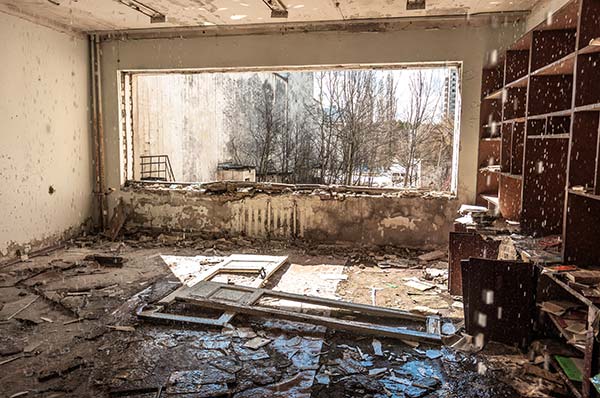Case Studies: Burst Pipe and Water Damage Investigations
Sustained cold temperatures of winter, typically several days of subfreezing weather, sometimes accompanied by breezy winds, bring claims of frozen pipes and water damage. When freezing occurs it is not the formation of ice in the pipe that causes it to rupture. Rather, it is the fact that the ice has formed a plug in the pipe, isolating the water in it from the rest of the system. When the temperature of water approaches freezing, its volume increases. It is this increase in volume that causes the pressure in the pipe to build and ultimately fractures the wall of the pipe, pipe fitting or coil.
Most often, it is only when the ice plug melts and the water supply can reach the fracture that the real damage occurs. A small fracture of 1/8” by 4” long can flood an area at the rate of about 1,000 gallons per day. Residences, especially those that are unoccupied when owners vacation to the warmer climes, are especially susceptible to this type of damage. Escaping water floods basements and ruins mechanical systems in addition to damaging foundation walls, floors and finishes.
Insurers want a better understanding of the real cause of the freeze-up. What really happened to cause the incident?
Frequently, an expert is required to investigate an incident and report to counsel or insurance adjuster what, in their opinion, led to the claim. Knowledge of the cause enables insurers to determine the validity of a claim as well as to consider subrogation, where appropriate.
Freeze damage incidents require experts to consider many possible causes that may include:
- infiltration/draft conditions, open louvers, vents, windows
- inadequate insulation in walls, ceilings, piping
- utility failures including electrical interruption, low pressure natural gas
- failure to fill oil/propane tanks
- heating equipment failure
- control system failure
- improper heating or piping system design
- Architect/Builder/mechanical installer negligence
- owner negligence
- equipment design defect/manufacturing defect
- improper/inadequate maintenance
The list goes on and on.
Beyond having the owner turn off the water supply, the most important thing an insurer can do is to expedite investigation of the incident by assigning an insurance claims adjuster as soon as the claim is reported. An immediate site visit, coupled with interviews of owners, maintenance personnel and repairmen and extensive photographs of the rupture area and damaged property will enable the adjuster and insurer to reduce their costs while improving the reliability of any further investigation that is required.
All too often, the owner proceeds with repairs, either temporary or permanent and valuable information is lost. If the adjuster arrives after repairs are made, the evidence of the damage may be gone and even if it is still on site, it may be altered by removal such that its reliability as evidence is questionable.
Should an insurer need to litigate or negotiate a subrogation claim, its position is strengthened if there is a formal chain of custody of relevant evidence gathered and removed from the site. The evidence may be needed for testing or to establish the subrogation claim. Proof of a proper chain of custody may be necessary to have the evidence admitted at trial or to successfully settle with another party. Adjusters must be mindful of the need to preserve the materials removed in an unaltered condition as found at the site as well as to have a record that lists every individual that has had contact with the materials, from the time they were gathered to the time they arrived at the courthouse. The documentation should detail the names, dates, places and use by each individual who had possession of the material as well as a statement from each person in the chain that the condition in which the evidence was received is the same condition in which it was delivered. If there were any alterations, such as for the purpose of disassembly or testing, all parties should agree to the change in condition and preferably witness the disassembly/testing. Having the records in good order insures the integrity of the evidence and avoids the possibility of parties or courts relying on unreliable evidence which could lead to an unfair result.
The key to reducing costs for insurers and insurance adjusters is to be proactive and to investigate the incident at the earliest possible opportunity. Experts assigned to the claim will form their opinion based on a careful review of the conditions and actions or inactions leading up to the incident. The conditions will include a site visit, evidence of damage, examination of failed materials and equipment, results of testing/investigation coupled with their training and field experience. Expert opinions permit insurers to evaluate the validity of a claim and determine responsible parties. The earlier in the process that an expert is assigned to evaluate the claim and express an opinion, the better the result for both the insurer and the insured.
By Alan C. Grossman, P.E.

DOWNLOAD BROCHURE
Learn about our broad range of litigation support and insurance investigation services.
